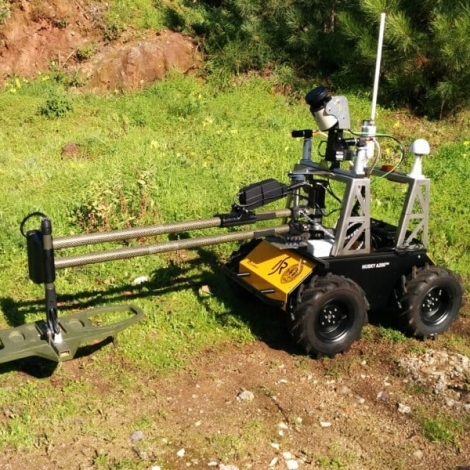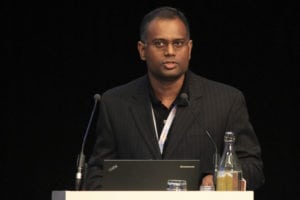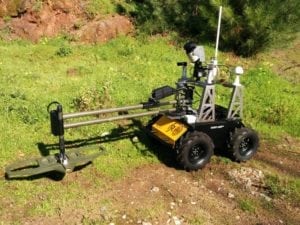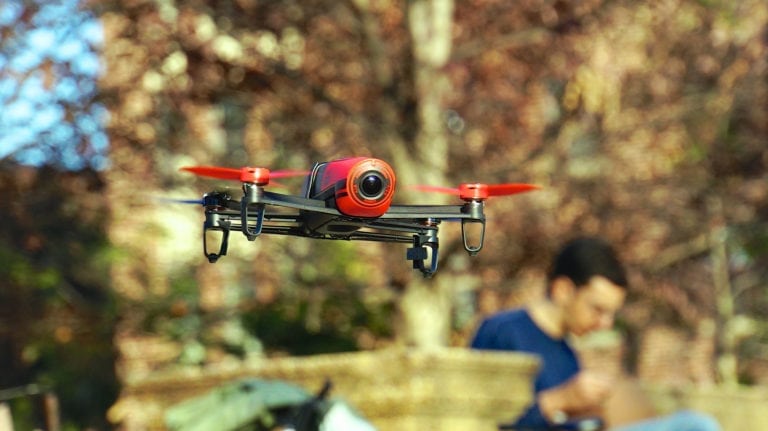Dr. Raj Madhavan has made a career connecting two concepts that, to most of us, seem to contrast: robotics and the world’s poor and underserved communities. One of the starkest intersections of those two worlds is in robotic landmine detection. Work to develop new methods of detecting landmines left over from decades-old conflicts is making communities safer and opening once dangerous land to new development.
Dr. Madhavan has championed that kind of humanitarian application of robotics as Chair of the Institute for Electrical and Electronics Engineers Robotics and Automation Society Special Interest Group on Humanitarian Technology (IEEE RAS-SIGHT). He is the Founder and CEO of Humanitarian Robotics Technologies, LLC. Most recently he was a distinguished visiting professor of robotics with AMMACHI Labs at Amrita University in Kerala, India, and he has held appointments with the Oak Ridge National Laboratory in Tennessee, USA, the US National Institute of Standards and Technology and the Maryland Robotics Center with the University of Maryland, College Park (USA).
For 20 years, Dr. Madhavan has contributed to field robotics and systems and control theory. His research interests now lie in the development of technologies and systems that are cost effective, reliable, efficient and geared towards improving the quality of lives of people in underserved communities around the globe.
See Dr. Madhavan’s E4C Webinar, The Role of Robotics in Global Development at our Webinars pages or in the video above. And here we have asked Dr. Madhavan five questions.
E4C: How does your work in robotics help people in developing communities?
RM: My current work focuses on the applied use of robotics and automation (R&A) technologies for the benefit of under-served and under-developed communities by working closely with them to develop solutions that showcase the effectiveness of R&A solutions in domains that strike a chord with the beneficiaries. I am particularly interested in the development of technologies and systems that are cost effective, reliable, efficient and geared towards improving the quality of lives of people in the aforementioned communities around the globe. This is made possible by bringing together researchers, practitioners from industry, academia, local governments, and various entities such as the IEEE Robotics Automation Society’s Special Interest Group on Humanitarian Technology, NGOs, and NPOs across the globe.
E4C: What does that look like specifically?
RM: Some of the areas I am currently working on include disaster response and recovery using unmanned aerial vehicles, landmine clearance using unmanned ground vehicles, development of low-cost and sustainable solutions with applications agriculture and traffic management. I am also involved in an Initiative that is considering robotics and automation issues that are relevant to society at the intersection of technology and public policy. See for an overview of my motivation and philosophies that drive my work and the IEEE Future Directions Newsletter article ‘’ for the Initiative).
See ‘Humanitarian Robotics and Automation Technologies: Improving the Quality of Life for Humanity‘, International Journal of Advanced Robotic Systems, Highlights, pp. 50-52, June 2015, for an overview of my motivation and philosophies that drive my work. Also see the IEEE Future Directions Newsletter article ‘Understanding the Societal Impact of Autonomous Technologies.’
E4C: What excites you about your field now?
RM: With continually improving computing keeping up with Moore’s law and the advent of low-cost connected sensors, and a market that is open to robotics and automation applications (for the most part anyway), this is an exciting time for someone like me who is interested in bringing these technologies for the benefit of humanity. The use of UAVs for humanitarian applications is increasingly becoming commonplace. I am also particularly excited about the development of sustainable R&A technologies for agricultural and educational domains where the deployment of such technologies holds immense potential in making a lasting impact in terms of changing peoples’ lives for the better.
E4C: What promising technologies have emerged from the RAS-SIGHT humanitarian robotics challenges?
RM: One of the major contributions of Humanitarian Robotics and Automation Technology Challenges (HRATCs) has been the engagement of graduate level students in solving the landmine clearance issue, which is one of the lingering remnants of wars across the globe. In addition to creating awareness, it has provided a platform in which the entry barrier for competing has been lowered significantly since the participants are not required to purchase sensors or robots or even have to develop code from scratch as all of these are provided to them even before the Challenge begins. In terms of technologies, the Challenge is more focused on tailoring existing state-of-the-art to the problem at hand rather than trying to contribute to fundamental science. As such, HRATC can be thought of as a Challenge that enables communities to maintain affordable solutions to a problem that they care most about – not in a standard of living improvement fashion but in a fundamental way tied to their existence and sustenance.
E4C: It’s hard to talk about robotics without seeking predictions. So, what key developments do you think we’ll see in the next 5 – 10 years?
RM: My prediction for the next 5-10 years would be that we will see several instantiations of R&A technologies making their way into parts of the world where these technologies exist mostly in people’s minds based on what they have seen in movies or read in science fiction works. While undoubtedly there will be advancements in several areas such as manufacturing where robots and humans work side by side, self-driving cars shuttling people back and forth, and UAVs creeping into the delivery business, and robots making their way into homes, I suspect the progress for the developing world would be much slower even though these incremental changes themselves would be dramatic. We can also expect interesting scenarios to emerge that will necessitate development and implementation of rules and regulations to deal with the legal, ethical and societal aspects of bringing robots and automation into our daily lives in ways that might seem far fetched now!



